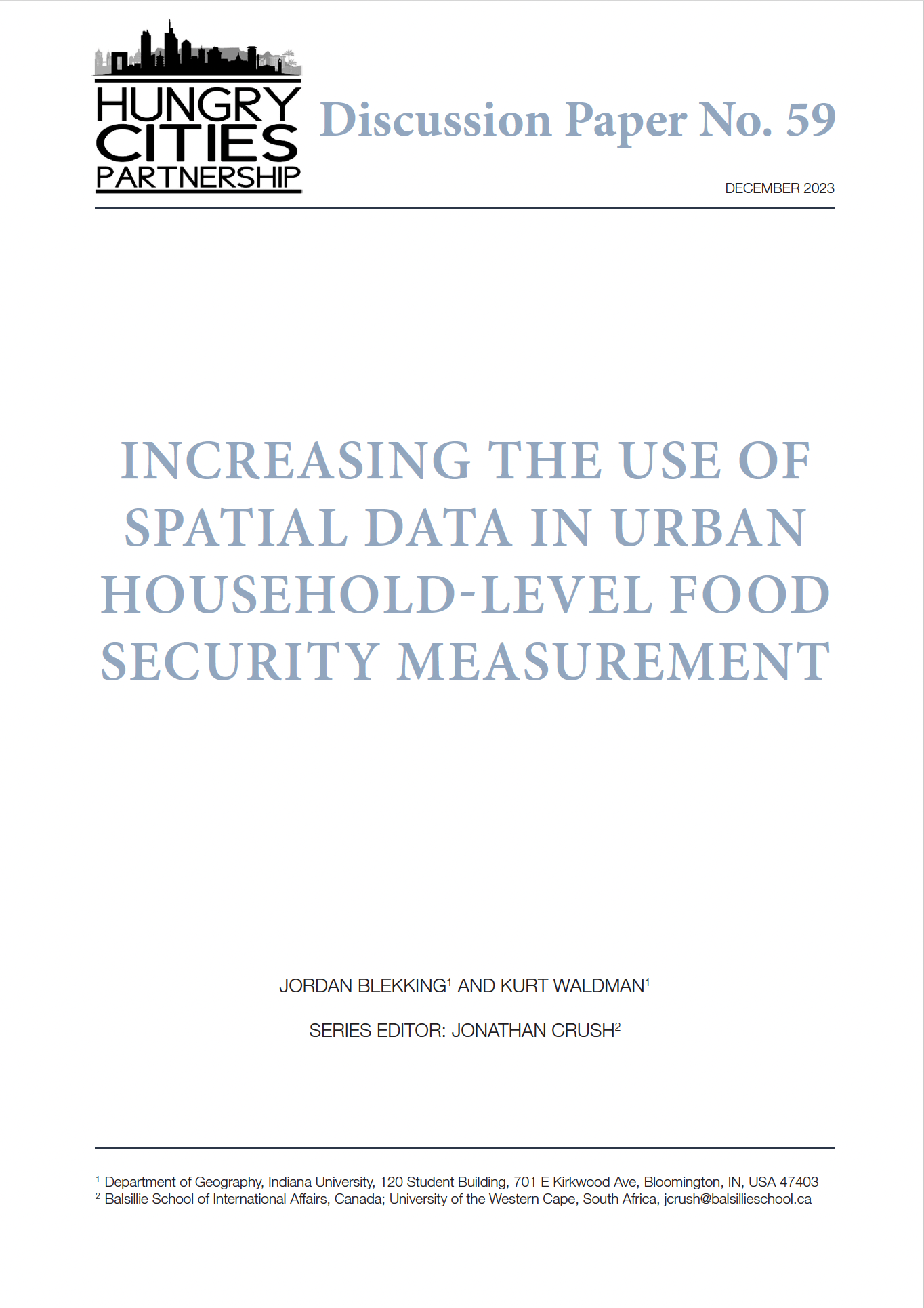Measuring urban food security in Africa is challenging because the current food security metrics were designed for rural contexts, and often feature a bias toward food availability, yet limited urban food production means urban food security measurement requires a multi-dimensional evaluation that also takes stock of the spatial and behavioural dimensions of food security. Current metrics are poorly suited to evaluate urban food security because they do not incorporate the spatial and behavioural dimensions of urban livelihoods, which relate to the variability of entitlements across space and how urban infrastructure accessibility enhances or constrains the choices available for a household to select. In this paper, we illustrate why the spatial dimensions of urban food security are critical to include in household-level evaluation of food security, with specific focus on the lived experience of vulnerable urban households. We then identify how the behavioral dimensions of food security are inseparable from infrastructure, how the association between poverty and stress influences choices, and how infrastructure and decision-making are connected to agency. Lastly, we highlight how integrating spatial data on food retailer distribution, transportation networks, and population density can enhance existing food security metrics in the urban context. Enhancing our approach to measuring urban food insecurity will provide insight into the spatial inequalities that can limit household choices and shape household agency.

